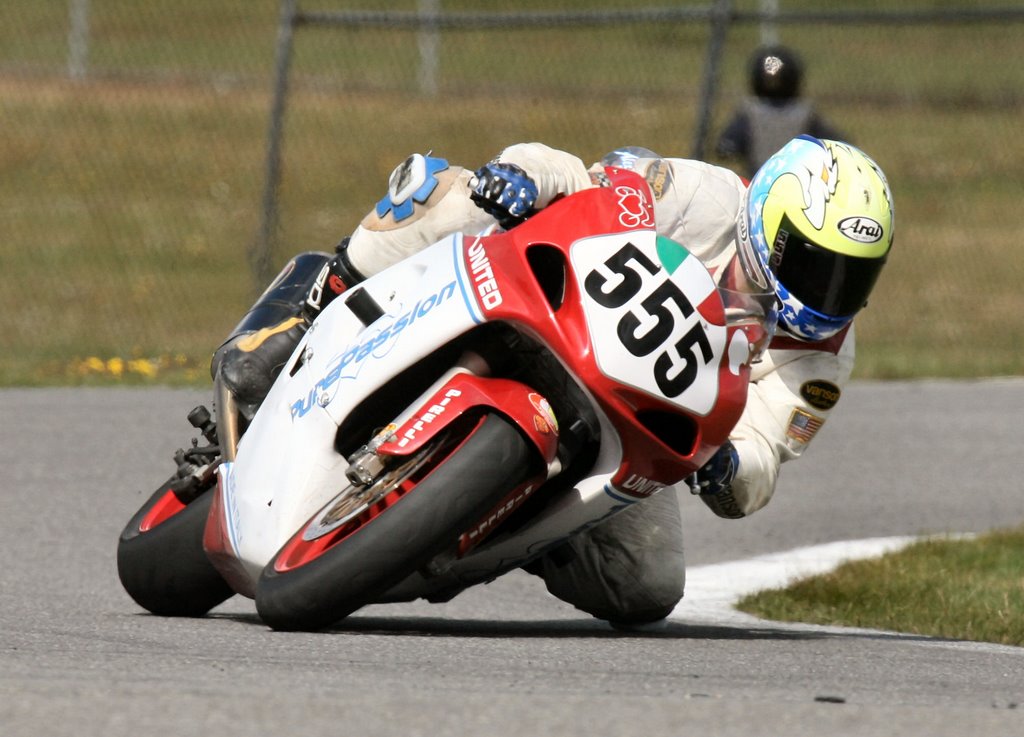
By Robert Lombardi for Pure Motorbike Passion
My motorized 2-wheel career started in the mid 80’s on a 1985 RM 125. Wow! I though this is crazy; all this power with the turn of your wrist. Six months later I felt it was time to go racing, so I graduated to a 250cc and had even a brief tour on a 500cc machine. During the many practices and races in motocross I learned that in order to go fast I had to push my limits, and that led to some crashing, a lot of crashing. It became part of the game. But as you may expect, the injuries became to many. As the years went on, racing motocross had been taking its toll on me, and I was looking for another 2-wheel experience to fill the void. I needed something less abusive on my body on a daily basis. In 1994, I bought a CBR 900RR: my first street motorcycle. This bike was the @#$% ultimate machine and this eventually led to track days. I did not want to repeat my experience that I had on the dirt bike so I adopted an “aviation” type attitude. No mistakes, as I were flying a plane. With an aircraft you have no second chances. I felt that, due to potential catastrophic results, riding a bike should be thought in this way. Explanation! Simple no risk; don’t do any thing unless you know that you are going to make it, even if it means to slow down a little bit. Yes, it will take longer to reach your potential but at least you will be around to achieve it, and having fun in the meantime. Now, you may ask: what has it happened to the “push the limits” theory? Well, if you are willing to give it a try, it does work for a while. According to my experience, most of the riders who adopt this method do not last long. They end up plagued with injuries and financial woes that eventually cause them to quit. In the other hand, since 2003 I have managed to accumulate 8 regional and 2 endurance national championships using the “aviation method”. Also, in the last 4 seasons, I finished every race I started, except one (Kansas, broken ribs) and I had only two other crashes, both of them in practice. Believe me, my system does work!
All said I am going to answer the title question. Do you have to crash to improve your riding? No! Will it happen? OH YEAH! You could be doing everything right and still go down: it is the nature of the beast and it is our job to cut down the preventable, adrenalin filled, mistakes and bad decisions that cause what I call “unnecessary crashes”.
For instance, the rider that took out Alessandro at the last NESBA day at Summit Point made an obvious adrenalin filled mistake. (watch the video)
In conclusion, it is important to learn something from every crash and understand the dynamic of why it happened: this will help to avoid future crashes.
Good luck,
ROB






3 comments:
Hi Alex and Rob,
Very interesting article. I didn't really take the idea of crashing too seriously until I did. The SV that I rode earlier in the season felt like it had so much traction that, unless I did something totally dumb, I would be OK. Even until I laid down the R6 a couple weeks ago I felt like I was very much in control. The next second the bike was sliding away from me and I was on the track. I have a couple theories about what I actually did wrong, but no one was following me so I can't be 100% sure. By the looks of the peg, I was dragging it and perhaps got too much leverage on it. Another theory is that I just plain ran out of tire.
Anyway, thanks for the blog and the perspective on unfortunate get-offs. Take it easy!
Tim
Tim;
Thanks for the complements. Sometimes it is hard to get the answer. But most of the time those simple low sides are caused by throttle greed or loosing the front due to a mistake in body position. Unfortunately it takes a lot of crashes to be comfortable enough to diagnose “exactly” what happened. Sometimes if you crash hard enough you forget the whole thing and what you had for breakfast that morning. ROB
Tim most likely there was too much acceleration for that leaning angle. In Pocono East there are only 2 turns where people have been loosing the rear over the years: the double left going to the bus stop and your turn, T10. Both of them are turns characterized by a late apex that forces the rider to arch the turn. When arching none of the variables involved in turning can, in any moment, outdo the others without causing a sudden loss of grip: low siding at the entrance of the turn and high siding at the exit.
In the future try to carry more speed at the entrance in order to reduce the acceleration at the exit.
Happy riding,
ALEX
Post a Comment